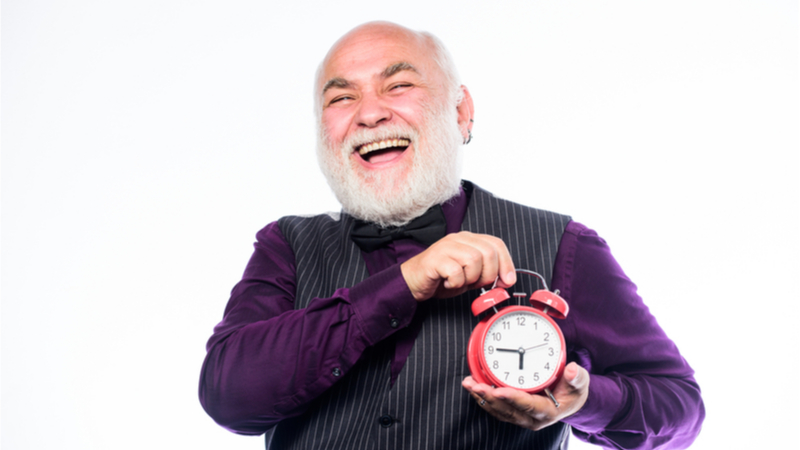.
S O U R C E : Life Extension Advocacy Foundation (LEAF)

Researchers at Stanford University have demonstrated they can rejuvenate human cells, making them more like young cells again, by rewinding an epigenetic aging clock.
Epigenetic alterations and aging
One of the hallmarks of aging is epigenetic alterations, which are the alterations to gene expression that our cells experience with age. They harm the fundamental functions of our cells and can increase the risk of cancer and other age-related diseases.
As we grow older, our cells are exposed to environmental factors and are subject to harmful changes in their genome through epigenetic mechanisms. Such changes accumulate over time and have been correlated with the decline of aging cells.
Epigenetic alterations in aging include changes to methylation patterns, which, in general, correlate with a decrease in the amount of heterochromatin, an increase in chromosome fragility and transcriptional alterations (variance in gene expression), remodeling of chromatin (a DNA support structure that assists or impedes its transcription), and transcriptional noise.
In essence, these epigenetic changes appear to influence our cells to become functionally older and dysfunctional, and if those changes could be reset, such a therapy could reverse cellular aging and prevent or reverse many age-related diseases.
Aging is characterized by a gradual loss of function occurring at the molecular, cellular, tissue and organismal levels. At the chromatin level, aging associates with progressive accumulation of epigenetic errors that eventually lead to aberrant gene regulation, stem cell exhaustion, senescence, and deregulated cell/tissue homeostasis. Nuclear reprogramming to pluripotency can revert both the age and the identity of any cell to that of an embryonic cell. Recent evidence shows that transient reprogramming can ameliorate age-associated hallmarks and extend lifespan in progeroid mice. However, it is unknown how this form of rejuvenation would apply to naturally aged human cells. Here we show that transient expression of nuclear reprogramming factors, mediated by expression of mRNAs, promotes a rapid and broad amelioration of cellular aging, including resetting of epigenetic clock, reduction of the inflammatory profile in chondrocytes, and restoration of youthful regenerative response to aged, human muscle stem cells, in each case without abolishing cellular identity.
Turning back the clock
We have previously talked about how researchers have already worked out how to hit the reset button on aging cells. In a nutshell, cells can be reset to a more youthful state by exposure to four reprogramming factors, Oct4, Sox2, Klf4, and c-Myc (OSKM). These are often called the Yamanaka factors, after Dr. Shinya Yamanaka, who discovered them back in 2006 [1].
This has been demonstrated in living animals in late 2016 by Ocampo et al. at the Salk Institute, who used partial cellular reprogramming to reset the epigenetic alterations of mice [2]. However, their experiment had certain issues that left some unanswered questions.
It used mouse models of accelerated aging known as progeric mice, and while they experience aging-like symptoms and have considerably shorter lifespans, these mice do not exactly simulate the natural complexity of regular aging. Therefore, we cannot solely rely on progeric mice to determine the effectiveness of a therapy that targets aging, as they do not provide conclusive proof that such a therapy would work in normally aging mice or humans.
There was also no direct evidence that rejuvenation of cells can be achieved in naturally aged human cells taken from elderly people, nor was there a deep analysis of aging biomarkers to ascertain how complete this rejuvenation is.
This is why, in a new study, Dr. Jay Sarkar, Dr. Thomas A. Rando, Professor Vittorio Sebastiano, and other researchers have used a partial cellular reprogramming approach to reset old human cells back to a youthful state, which represents a big step towards developing these therapies for potential translation to humans [3].
The researchers designed a platform that would allow them to test if partial cellular reprogramming does in fact reverse aging in both human and mouse cells, across multiple cell types, and also how it affects all the hallmarks of aging, the nine reasons why we age.
Exposing cells to the Yamanaka factors for too long not only resets the age of the cell but also reverts it back to an earlier development stage similar to an embryonic stem cell, a state in which the cell can become any other cell in the body. This is useful when you need to create batches of specific patient-matched cells for transplant, but it’s not good in situ when a heart cell forgets what kind of cell it is!
Fortunately, it appears that we might both have our cake and eat it by separating the resetting of cellular aging from the resetting of cell identity.
Yamanaka with a twist
The researchers used the four Yamanaka factors (OSKM) but also added their own twist by including two more factors, LIN28 and Nanog, to make OSKMLN. Professor Vittorio Sebastiano explained in an interview with Lifespan.io last year why they include these two extra factors in their reprogramming process.
"We have seen that this particular combination is particularly potent and effective at promoting cellular rejuvenation. LIN28 is also linked to the down-regulation of Let-7, which is an mRNA, that promotes differentiation."
My belief is that we’re actually not only working on the epigenetic level but potentially also working on the post-transcriptional level, for example by making sure that the levels of Let-7 get down-regulated to the expression of LIN28, and this actually has an additional effect on the rejuvenation process.
The researchers demonstrated that exposing cells to a low dose of OSKMLN for a small amount of time allowed the cells to retain their identity but return to a youthful state, as measured in several ways.
This is possible because the factors appear to operate in two distinct phases. Initially, the factors stimulate the epigenome to erase the epigenetic markers of cellular aging, and only later do they stimulate it to erase cellular identity. The key boils down to how long the cells are exposed to the reprogramming factors, and a short exposure is enough to reset the age of a cell without it losing its identity.
.../...
.














































